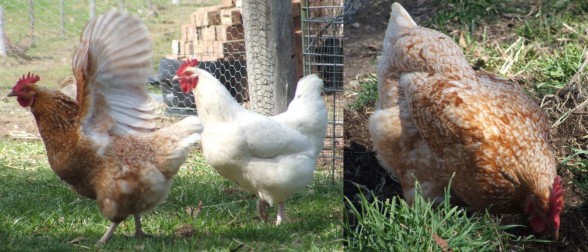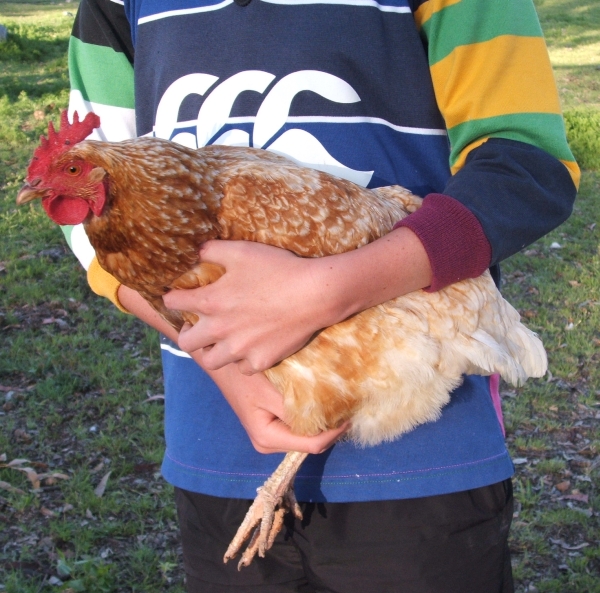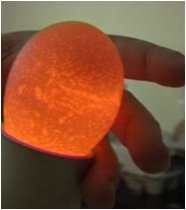General tips for backyard poultry production
General tips for backyard poultry production
The following tips on aspects of small scale or backyard poultry should be used as a guide only. Poultry Hub accepts no responsibility for persons who use this information to grow or prepare poultry and poultry related products.

A well designed coop will provide chickens with enough room to stretch their wings and scratch about.
Choosing Backyard Chicken Breeds
Many chicken breeds are perfectly suited for backyard flocks. Choosing the right breed for your backyard flock solely depends on your needs. Chicken breeds can be divided into two basic categories: birds for meat and birds for eggs. Also, certain chicken breeds can boast milder temperaments, which are typically better suited for families with small children who would interact with the birds. Poultry Hub Australia has produced a large poster showing the most common breeds of chickens currently shown in Australia.
Chicken coops
Chicken coops must provide shelter and protection for the birds that will live in them. Coops must be big enough for the chickens to live comfortably by allowing them room to flap their wings, walkabout, and build comfortable nests. Chicken coops must also be hygienic—featuring changeable flooring (like sawdust, wood chips or sand), ventilation and room for humans to clean. Chicken coops must also provide warmth through insulation, heat lamps, or extra bedding and nesting material. If building a new coop, make sure you consider the following: site selection, drainage, noise, odour, ease of access and the number of chickens you intend to keep. Note that zoning restrictions may prohibit you from owning a rooster if you live in an urban area. A good coop will provide your birds with shade and shelter, freedom from draughts and protection from the rain.
Feeders and drinkers
There is a great variety of different feeder and drinker systems you can install, depending on the design of your coop and number of birds. Make sure that the system you choose provides sufficient space for the birds to have access to clean food and water at all times. Water must be kept clean and free from manure. If you live in an area prone to frosts, lag any pipes to prevent freezing. Feeders should be easily cleaned and replenished, and if possible, positioned to prevent access by wild birds.
Meat chickens and layers require different types of feed. The type will also vary according to the age of the birds. Chicks will usually be fed on crumbles, which are high in protein and energy. By the time a pullet is ready to lay, it will be consuming from 80 to 100 g of feed per day. A grown hen will drink from 250 to 300 ml of water a day, consuming up to half a litre per day in very hot conditions. This means that your drinker system must be reliable, as, without sufficient water, birds will quickly become dehydrated.
Health and Husbandry

Place the fingers of one hand around the chickens legs, facing it in to your elbow. Hold its wings with your other hand.
Birds should be checked regularly to ensure they remain in good health. It is vital that you learn how to catch and hold birds securely and safely. A quick feel of the breastbone for muscle will let you know if your birds are losing weight. Check regularly for parasites such as lice or mites and isolate and treat sick birds. External parasites such as these can be easily seen. Learn to recognise common diseases. Monitor the visual appearance of your birds so you can pick up the first signs of disease, feather pecking or any aggressive behaviour.
Hygiene
Manure should be removed and clean litter or bedding should be added on a regular basis. If your coop design allows for it, keep a rake or shovel hanging near the coop as this will come in very handy. Old litter and manure are great for composting and adding to gardens as a fertiliser.
Eggs
Eggs should be collected daily as leaving eggs in a nest box can encourage chickens to go broody. Hens may also peck or eat eggs that are left, and once they have acquired this habit it is very hard to change. Artificial light used in the coop will encourage hens to lay for longer in winter. Another trick to increase egg production is to place a golf ball or ceramic egg in the nest box to encourage hens to lay in the nest. Check eggshells for any defects before using home laid eggs. Eggs with defective shells should not be consumed without first cooking, as bacteria may have penetrated the shell wall. Defects include softshells, hairline cracks, pimples or pinholes. A homemade candling device is easy to construct from a torch and a paper roll and provides a quick way to check shell quality. Remove any external excreta with a stiff brush. An old toothbrush makes an ideal tool.

Eggs can be stored for up to 6 weeks if refrigerated. An egg ages 7 times quicker if left on the bench at room temperature. By marking the date collected gently on the outside of the shell when you collect your eggs, you can make sure that old eggs don’t get left behind unused. If an egg has no visible date marked on it, you can always check for freshness by floating the egg in water.
Fresh eggs will sink to the bottom of a bowl of water, whereas older eggs will float. It’s good to have some idea of the freshness of your egg because different aged eggs have different cooking qualities. Fresh eggs are hard to peel if boiled but are the best to use for poaching, frying and scrambling. Older eggs are great for baking, using in quiches and hard-boiling.
Whichever way you like your eggs, it is very satisfying to eat an egg produced from a chicken that you have personally cared for in your own backyard.


